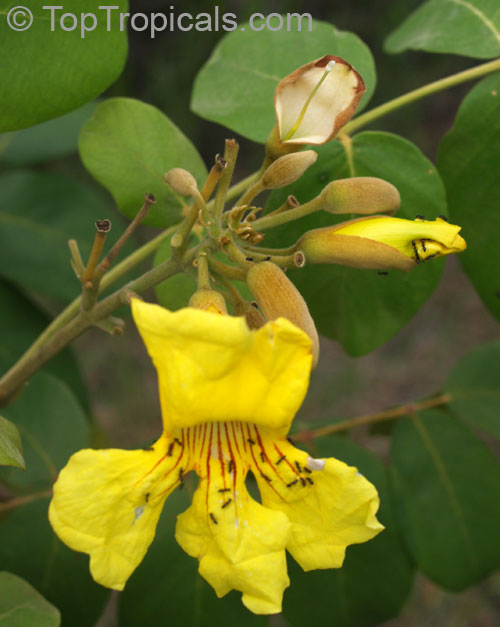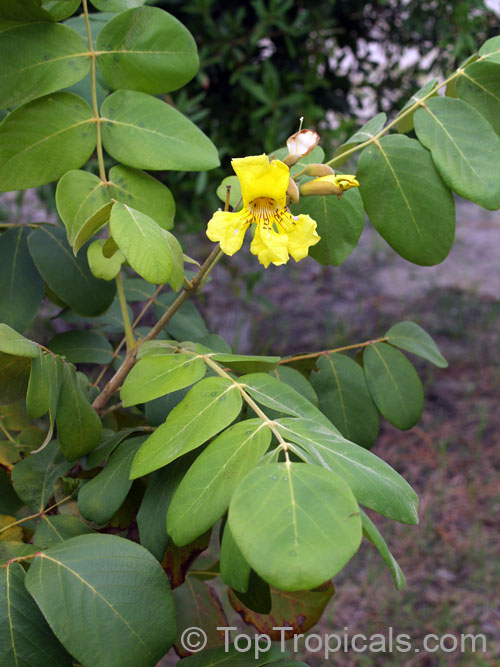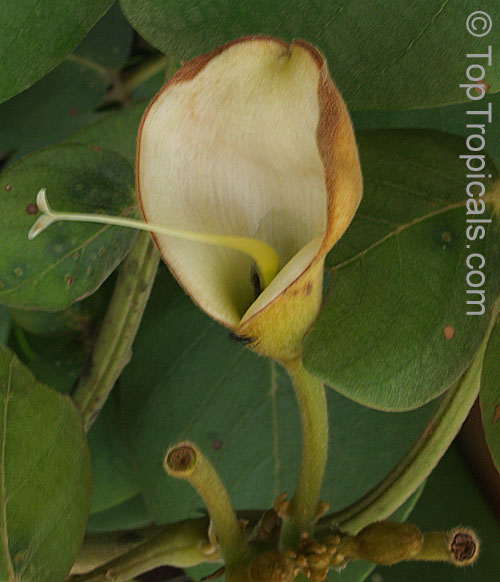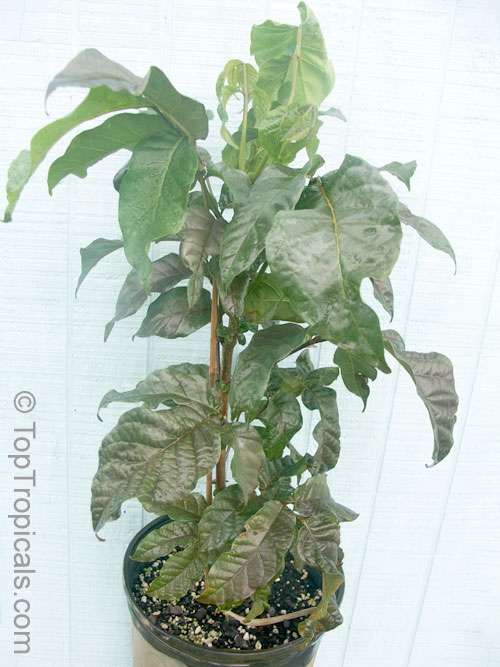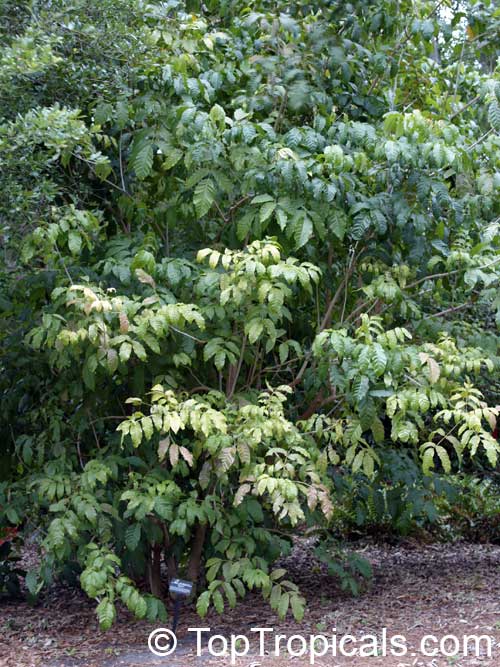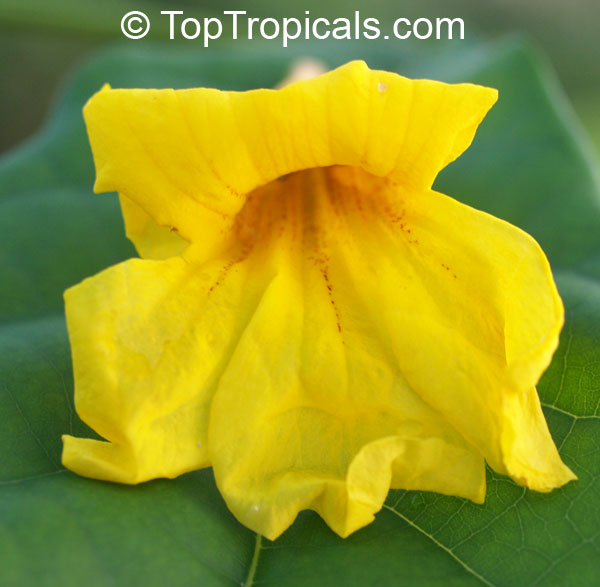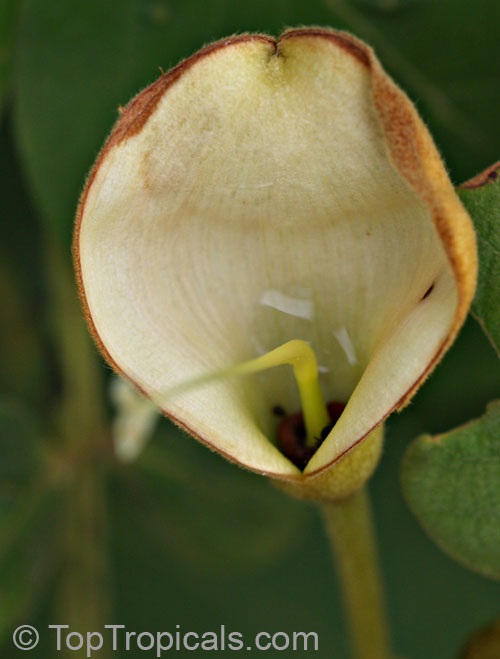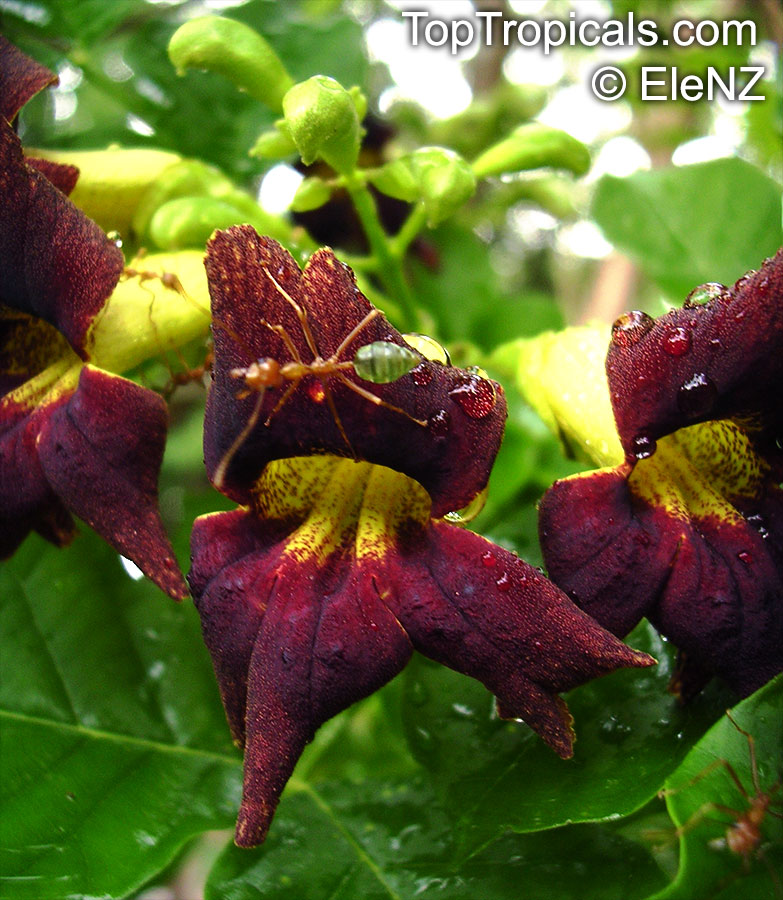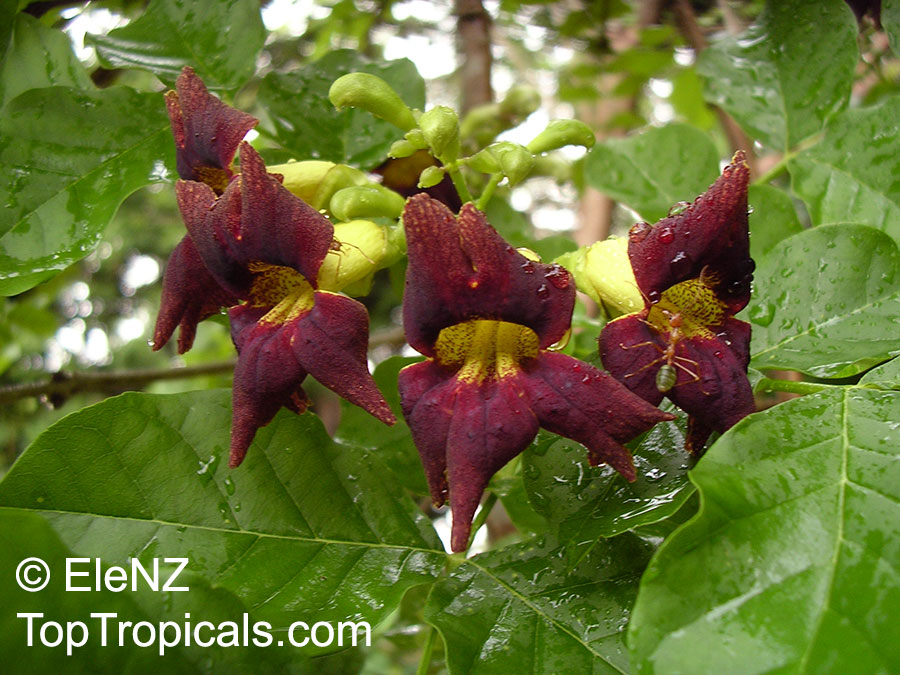Featured plant - a special for your collection
Markhamia - a rare find beauty from Africa...
Markhamia zanzibarica var. Aurea
Scientific name: Markhamia lutea, Markhamia zanzibarica
Family: Bignoniaceae
Common names: Bell Bean Tree, Nile Tulip Tree, Siala, Klokkiesboontjieboom
Origin: Tropical Africa
This beautiful African ornamental is very rare in cultivation, while it deserves more attention among gardeners with tropical and subtropical plant collections. The lush foliage creates a wonderful tropical atmosphere, and the flowers look stunning on dark green background. Markhamia is Tree of the Year for 2008.
Markhamia is a subtropical small tree or large shrub has large tropical looking leaves, striking trumpet flowers and decorative fruits. Flowers are yellow, often with red veining or spots, or maroon, coming in panicles. Leaves can grow very large, over 1 ft long.
Markhamia originated from Tanzania and Malawi, south to the Kruger National Park in South Africa, and westward to Botswana, Namibia and the Caprivi Strip. It is found in bushveld, in riverine fringes, and often on rocky ridges and on hill slopes. It is commonly found growing among rocks on the dry northern slopes of the Soutpansberg. It was named by Berthold Seeman, in honour of his friend Sir Clements Robert Markham (1830–1916), English geographer and traveller, who introduced the famous quinine-yielding cinchona into India.
Markhamia belongs in the Bignoniaceae, a large family full of popular garden trees, shrubs and creepers. Garden plants in this family that are very well known to South African gardeners are Jacaranda trees and Trumpet creepers. Some southern African indigenous plants in this family are Kigelia africana (sausage tree), Tecoma capensis (Cape honeysuckle), Podranea ricasoliana (Port St Johns Creeper).
The tree has slender, crooked branches and a soft green crown, rough grey bark and odd-pinnate 2-4 pairs opposite leaf up to 18" long, asymmetric acuminate leaflets are medium, elliptic or ovate. It has 2–4 pairs of leaflets, the lowermost pair is the smallest and each pair increases in size towards the terminal leaflet. Funnel shaped yellow flowers have maroon stripes in the throat. The tree blooms from spring to summer, begins to bloom when 3-5 ft tall.
The flowers are visited by ants and butterflies. In Africa, the leaves are eaten by elephants. If you happen to have one as a house pet, this plant may provide a part of its diet (in this case, you may consider to get more than one plant).
The fruits are slender, bean-like capsules, over 1 ft long, spirally twisted, and dangle from the tree in late summer. Dark brown when mature, they split open lengthwise to release many flat, winged seeds. The papery, winged seeds are dispersed by wind.
The wood is fairly hard and durable, pale brown to yellowish, finely grained and produces a smooth finish. It is used in buildings for roof timbers and to make tool handles. It is well suited for the manufacture of ornaments. The roots and bark are used in traditional medicine to treat backache.
Markhamia is sensitive to severe frost and cold and does best in bushveld (savanna) gardens. However, it will tolerate mild frost and brief periods of cold, although in this case it may lose leaves for winter. Grow it in a warm, sunny spot in well-drained, fertile soil, and give it ample water during the summer. It is relatively slow growing and its small size makes it suitable for small gardens and courtyards, and as a good potential for containers. Growth rate is moderate during the first year. The tree will take both sun or shade, grows well even in poor soils.
Order Markhamia:
Picture of the actual plant for sale.
Plants are in 3 gal containers,
about 2-3 ft tall, nice and full
Picture taken August 2008:
Markhamia lutea tree
After the flowers falls off, the pedicle looks like a miniature lily...
Markhamia zanzibarica
